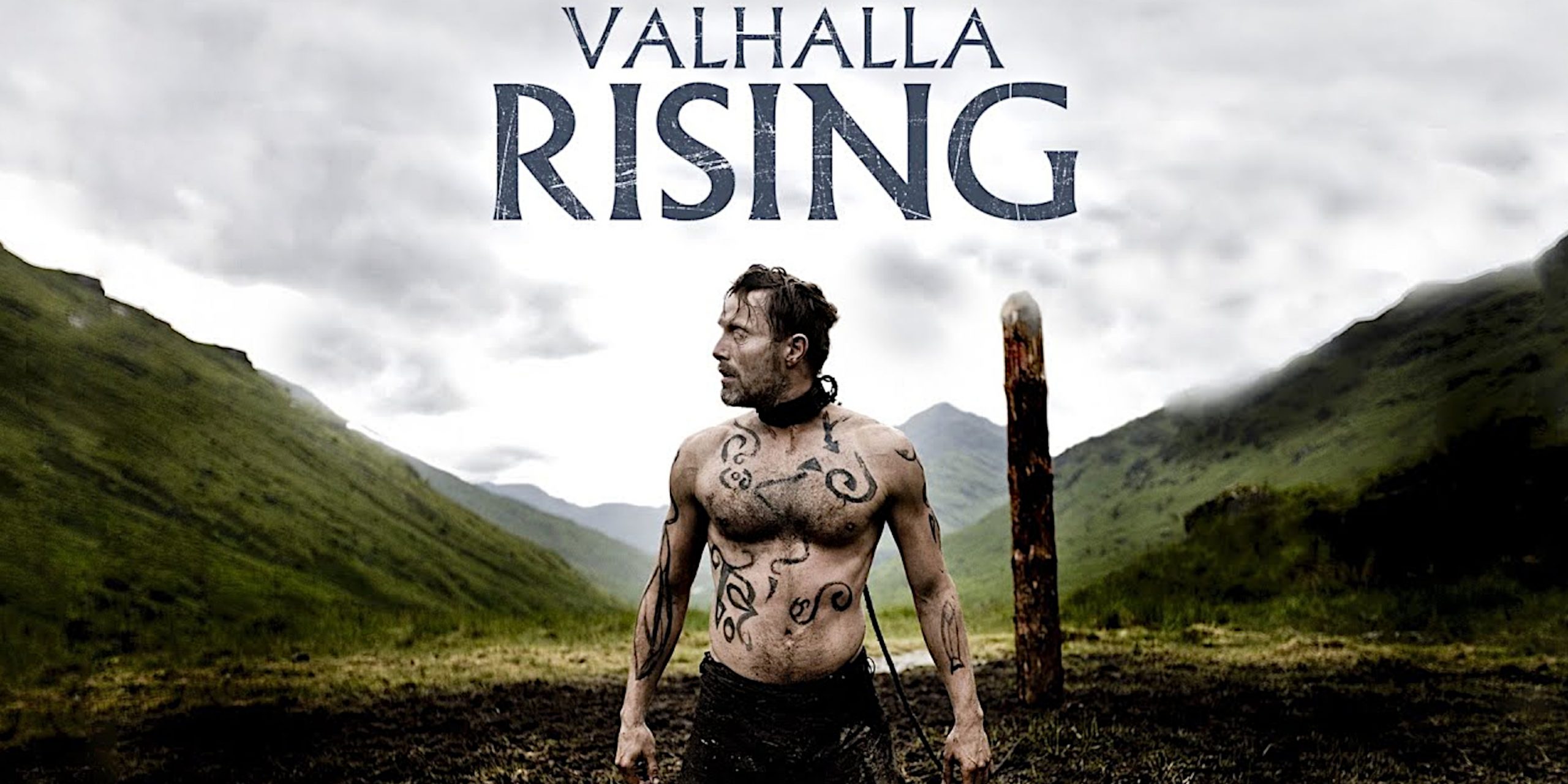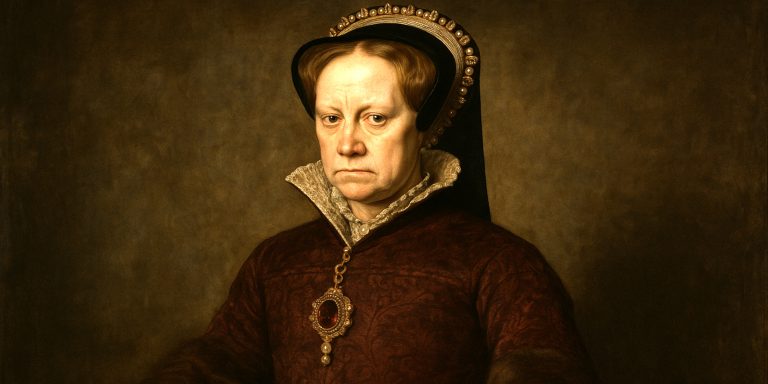
Valhalla Rising is one of those films that lingers. It doesn’t tell you what to think, nor does it lead you by the hand through a clear plot. Directed by Nicolas Winding Refn and starring Mads Mikkelsen, this 2009 film is a hypnotic descent into silence, blood, and belief. On its surface, it is a Viking epic about a mute warrior and his journey west. Beneath that, it is a meditation on faith, brutality, and the emptiness of conquest.
Plot Summary
The film is divided into six titled chapters, each with an almost biblical sense of weight.
- Part One: Wrath
We meet One Eye, a mute Norse warrior kept captive and forced to fight for entertainment. His brutal efficiency and animal-like awareness are established early. After escaping, he kills his captors and befriends a boy who becomes his voice. - Part Two: Silent Warrior
One Eye and the boy encounter a group of Christian crusaders travelling to the Holy Land. Believing One Eye to be a divine sign, they take him aboard their ship. - Part Three: Men of God
The journey west becomes increasingly strange. Fog engulfs the ship for days, faith begins to fracture, and it becomes clear that the men are lost. - Part Four: The Holy Land
When they reach land, it is not Jerusalem but the New World. The crusaders’ confusion gives way to paranoia and violence. - Part Five: Hell
The group’s faith disintegrates entirely. They turn on one another as they realise they have not found salvation, but purgatory. - Part Six: Sacrifice
One Eye accepts his fate. In the end, he allows himself to be killed by native warriors, completing a cycle of violence and surrender.
Symbolism and Themes
The Collapse of Faith
At its heart, Valhalla Rising is not about Vikings or crusades, but about the death of faith. The Christians believe they are chosen, but their God remains silent. One Eye, who has no voice or scripture, seems more attuned to the world than any of them. The film sets pagan violence and Christian zeal against each other, revealing how both can consume rather than enlighten.
One Eye as a Mythic Figure
One Eye is both a man and a myth. His visions of a blood-red world hint at a supernatural awareness. Some interpret him as an incarnation of Odin, wandering between worlds with his single eye of wisdom. Others see him as a kind of fallen angel or cursed man. What matters is that he stands outside both pagan and Christian orders, a silent observer of humanity’s endless cycle of faith and destruction.
Nature as God
The film treats nature as the only true deity. The landscapes of Scotland and the New World are vast, indifferent, and almost divine in their silence. The crusaders’ belief collapses when faced with this overwhelming natural order. The world itself becomes the judgment.
Violence and Redemption
Violence in Valhalla Rising is not glorified. It is sudden, brutal, and unadorned. One Eye’s killings are not heroic; they are ritual acts, expressions of survival or fate. By the end, his willingness to die feels like a kind of spiritual release, as though the only way to escape the endless circle of violence is to submit to it.
Cinematic Style
Refn uses silence as his main weapon. Dialogue is sparse; visuals and soundscapes do the talking. The pacing is slow, almost meditative, forcing the viewer to confront each act of brutality without distraction. The cinematography by Morten Søborg paints the Highlands as both beautiful and hostile, and the washed-out palette mirrors the film’s spiritual emptiness.
The score, by Peter Peter and Peter Kyed, merges industrial noise with droning ambience. It is not music meant to guide emotion, but to unsettle. Together, image and sound create a mythic timelessness where the Norse and the modern collide.
Historical Context
While the story is mythic, the setting draws loosely from the late Norse world, when Christianity was spreading through Scandinavia. The crusaders’ voyage west mirrors the Norse journeys to Vinland (North America), where myth and exploration intertwined. The film uses this historical moment as a metaphor for cultural collision and the spiritual exhaustion of Europe’s age of conquest.
The Ending Explained
The final scene is not meant to clarify, but to conclude. One Eye leads the boy to a riverbank where they meet the native warriors. He steps forward and accepts his death. The boy survives, symbolically inheriting what little wisdom remains.
In that act, One Eye transcends the violent world he has known. Whether he reaches Valhalla or simply ceases to be is left open. The point is that his silence, finally, has meaning.
Legacy and Interpretation
Since its release, Valhalla Rising has divided audiences. Some find it tedious or opaque, others see it as a masterpiece of minimalist storytelling. In many ways, it stands as Refn’s most philosophical film, a precursor to Drive and Only God Forgives in its fascination with wordless violence and moral ambiguity.
Its power lies in its refusal to explain itself. It is a film about belief, but it offers none to the viewer. Instead, it leaves you in the same fog as its characters—searching for a divine voice that never comes.
The Seven Swords Takeaway
Valhalla Rising is not a historical film so much as an allegory of humanity’s need for faith, even in the face of nothingness. It strips myth and religion down to their bones and asks what remains. Mads Mikkelsen’s performance is almost prehistoric in its intensity, embodying the silence at the heart of belief itself.
It is a film that rewards patience and introspection. In the end, it suggests that true transcendence may not come through conquest or revelation, but in acceptance of the unknown.



